- Why Start Carnation Seedlings
- Choosing the Right Seeds
- 1. Variety
- 2. Quality
- 3. Germination Rate
- 4. Growing Requirements
- 5. Timeframe
- 6. Hybrid vs. Heirloom
- 7. Quantity
- Preparing the Soil
- 1. Choose a well-draining soil
- 2. Sterilize the soil
- 3. Add compost or organic matter
- 4. Level and moisten the soil
- 5. Create furrows or divots
- 6. Sow the seeds
- 7. Water the seeds
- 8. Place in a warm location with indirect sunlight
- Sowing Carnation Seeds
- Materials Needed:
- Steps for Sowing Carnation Seeds:
- Providing the Right Conditions
- 1. Temperature
- 2. Light
- 3. Humidity
- 4. Air Circulation
- 5. Watering
- 6. Fertilizer
- 7. Transplanting
- Watering and Feeding
- Watering
- Feeding
- Transplanting Seedlings
- Troubleshooting Common Issues
- 1. Seeds not germinating
- 2. Seedlings are leggy and weak
- 3. Disease or pest issues
- 4. Poor growth or yellowing leaves
- 5. Lack of blooms
- Questions and Answers:
- When is the best time to start growing carnation seedlings?
- What type of soil is best for growing carnation seedlings?
- How deep should I plant the carnation seeds?
- Do carnation seedlings need direct sunlight?
- How often should I water my carnation seedlings?
- Videos: How to grow Carnations/Dianthus from seed a complete guide
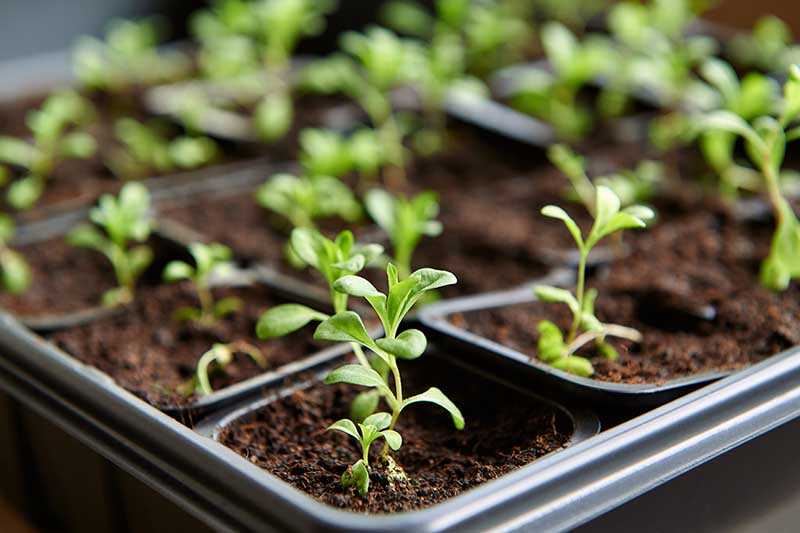
Starting carnation seedlings can be a rewarding and enjoyable experience for any gardener. Carnations, also known as Dianthus, are popular flowers that come in a variety of colors and have a lovely fragrance. By following a few simple steps, you can successfully grow your own carnation seedlings and enhance the beauty of your garden.
Gather Your Supplies
To start your carnation seedlings, you will need a few essential supplies. These include seeds, a seedling tray or small pots, seed starting mix, a spray bottle, and a warm location with indirect sunlight. Make sure to choose high-quality seeds from a reputable supplier to ensure the best chance of success.
Prepare the Seedling Tray
Fill your seedling tray or small pots with a seed starting mix, which is lightweight and well-draining. Moisten the mix with water, but avoid making it too wet. The ideal moisture level is when the mix holds together when you squeeze it, but does not release any excess water.
Sow the Seeds
Using the tip of your finger or a small pencil, make small holes in the seed starting mix. Place one or two seeds in each hole, then cover them with a thin layer of the mix. Lightly press the surface to ensure good seed-to-soil contact. Mist the surface with water from a spray bottle to provide additional moisture.
Care for the Seedlings
Place the seedling tray or pots in a warm location with indirect sunlight, such as a windowsill or greenhouse. Make sure the temperature remains between 60 and 70 degrees Fahrenheit. Keep the soil evenly moist by misting it regularly with water. Once the seedlings have grown a few inches tall and have several sets of leaves, you can transplant them into larger pots or directly into your garden.
Conclusion
By following these simple steps, you can easily start your own carnation seedlings and enjoy the beauty of these wonderful flowers in your garden. Remember to be patient and provide proper care, and soon you will be rewarded with vibrant carnations that will brighten up any space.
Why Start Carnation Seedlings
Starting carnation seedlings can have several advantages over buying established plants. Here are a few reasons why you might want to start your own carnation seedlings:
- Cost-effectiveness: Starting from seed is often cheaper than buying established plants from a nursery or garden center.
- Variety: By starting your own seedlings, you have access to a wider range of carnation varieties, including rare or hard-to-find cultivars.
- Control: Starting seedlings allows you to have full control over the growing conditions, including the soil, light, and temperature, ensuring the best possible start for your plants.
- Satisfaction: Growing your own plants from seed can be a rewarding and satisfying experience, especially when you see them thrive and bloom.
- Timing: By starting your own seedlings, you can time the planting according to your local climate and growing season, ensuring the best chance of success.
- Education: Starting seedlings can be a great way to teach kids about gardening and the natural process of plant growth.
In summary, starting carnation seedlings offers a cost-effective, diverse, and satisfying way to grow these beautiful flowers. It provides you with control over the growing conditions, allows for timing according to your local climate, and can be a valuable educational experience.
Choosing the Right Seeds
When starting carnation seedlings, it is crucial to choose the right seeds to ensure healthy and robust plants. Here are a few factors to consider when selecting your carnation seeds:
1. Variety
Carnations come in a variety of colors and sizes, so it’s important to choose a variety that suits your preferences or purposes. Some common varieties include large-flowered, dwarf, fringed, and spray carnations. Each variety has its unique characteristics, such as flower size, petal shape, and fragrances.
2. Quality
Always opt for high-quality seeds from reputable seed suppliers or nurseries. High-quality seeds are more likely to germinate successfully and produce healthy seedlings. Look for seeds that are plump, well-formed, and free from any signs of damage or disease.
3. Germination Rate
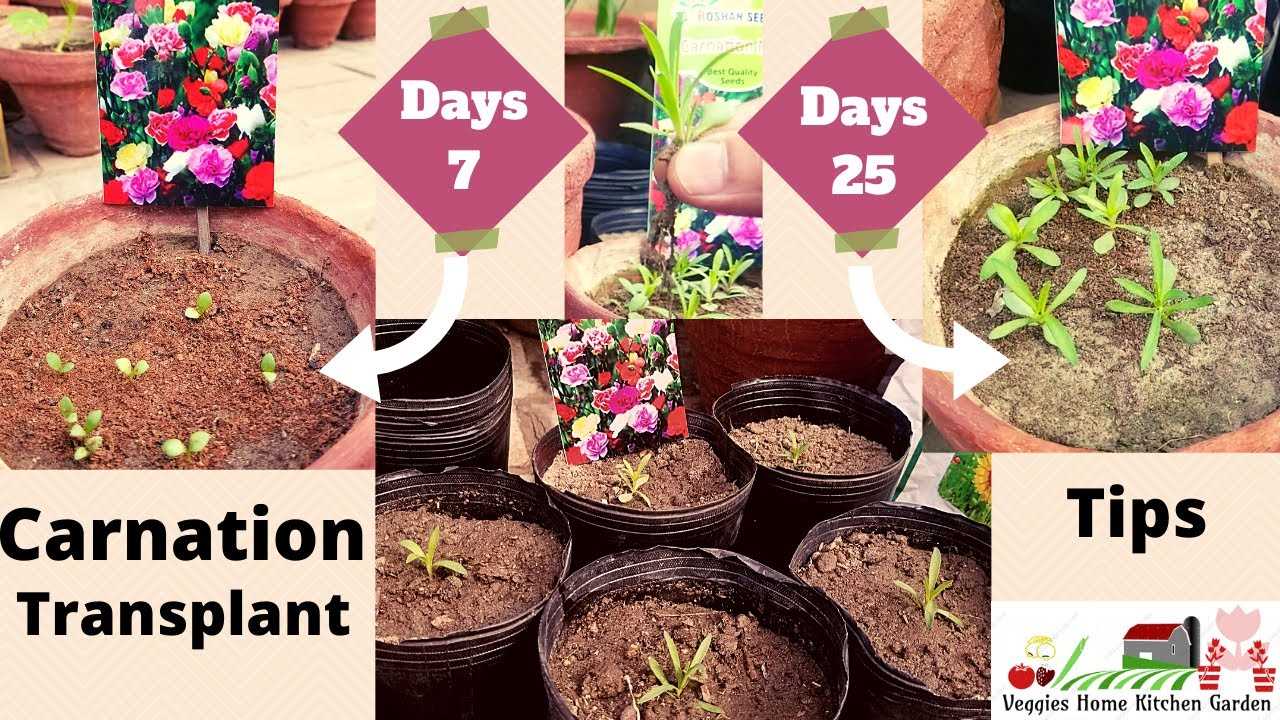

Check the seed packet or product description for information on the germination rate. This indicates the percentage of seeds that are likely to germinate successfully. Choose seeds with a high germination rate for better chances of success.
4. Growing Requirements
Consider the growing requirements of the carnation variety you choose. Some carnations are more suitable for greenhouse cultivation, while others thrive in outdoor gardens. Make sure the growing conditions required by the chosen variety align with your available resources and environment.
5. Timeframe
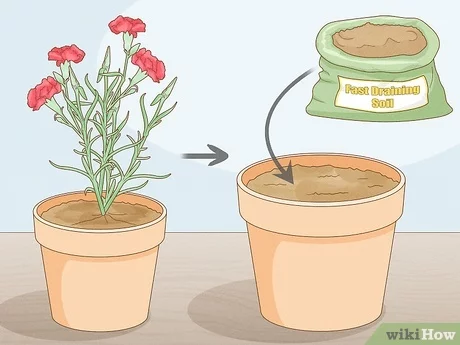

Be aware of the flowering time and maturity period of the carnation variety. Some varieties may produce flowers within a few months, while others may take a year or longer. Choose seeds that fit within your preferred timeframe for enjoying the blooms.
6. Hybrid vs. Heirloom
Decide whether you want to grow hybrid or heirloom carnations. Hybrid seeds are bred for specific characteristics, such as disease resistance or unique flower forms, while heirloom seeds are open-pollinated and offer traditional traits. Consider the pros and cons of each before making your choice.
7. Quantity
Determine how many seedlings you want to grow. Consider whether you need a small number for personal use or a larger quantity for a garden or commercial purposes. Make sure to purchase the appropriate quantity of seeds accordingly.
By carefully considering these factors and choosing the right seeds, you can lay a solid foundation for successful carnation seedling cultivation. Happy gardening!
Preparing the Soil
The first step in starting carnation seedlings is to prepare the soil. By providing the right conditions for the seeds to germinate and grow, you can increase the chances of successful seedling development.
1. Choose a well-draining soil
Carnations prefer well-draining soil that is rich in organic matter. Select a potting mix or soil that has good drainage properties to prevent waterlogging, which can lead to root rot.
2. Sterilize the soil
Before sowing the seeds, it is important to sterilize the soil to eliminate any harmful pathogens or weed seeds that may be present. This can be done by baking the soil in an oven at 180°F (82°C) for about 30 minutes.
3. Add compost or organic matter
To improve the fertility of the soil and provide essential nutrients for the seedlings, mix in compost or organic matter. This will help to promote healthy growth and development.
4. Level and moisten the soil
Ensure that the soil is level and moist before sowing the seeds. Use a spray bottle or watering can to gently moisten the soil, making it easier for the seeds to germinate and establish themselves.
5. Create furrows or divots
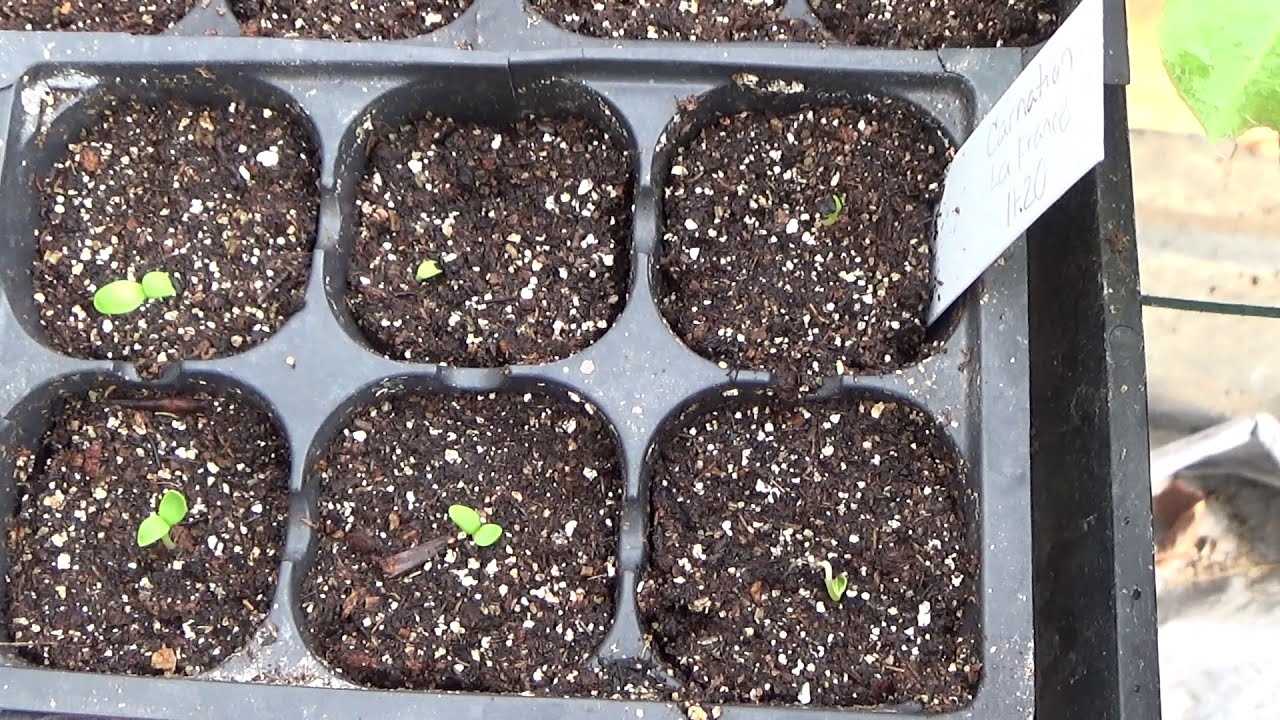

Make small furrows or divots in the soil using your finger or a small stick. The furrows should be shallow, about 1/4 inch (0.6 centimeters) deep, and spaced about 1 inch (2.5 centimeters) apart.
6. Sow the seeds
Sow the carnation seeds in the furrows, placing them evenly and covering them with a thin layer of soil. Press the soil gently to ensure good seed-to-soil contact.
7. Water the seeds
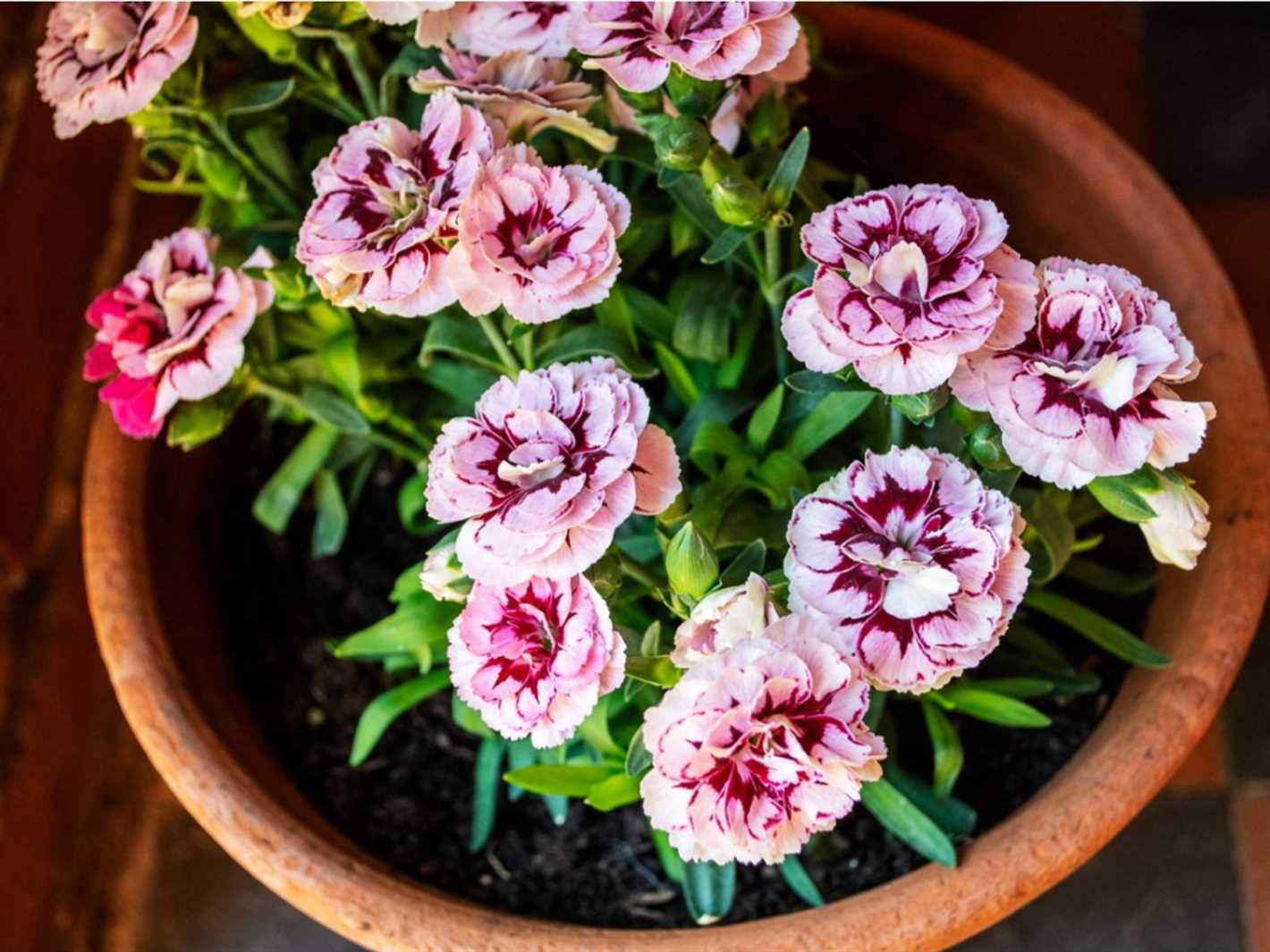

After sowing the seeds, water them gently using a misting spray bottle or a watering can with a fine rose. This will help to settle the soil around the seeds and provide the necessary moisture for germination.
8. Place in a warm location with indirect sunlight
Transfer the pots or trays to a warm location with indirect sunlight. Carnation seeds require temperatures between 60°F (15°C) and 70°F (21°C) for optimal germination. Avoid placing them in direct sunlight, as it can lead to overheating and drying out of the soil.
Following these steps will help you prepare the soil for your carnation seedlings, allowing them to thrive and grow into healthy plants.
Sowing Carnation Seeds
When sowing carnation seeds, it’s important to follow the proper steps to ensure successful germination and healthy seedlings. Here is a simple method for sowing carnation seeds:
Materials Needed:
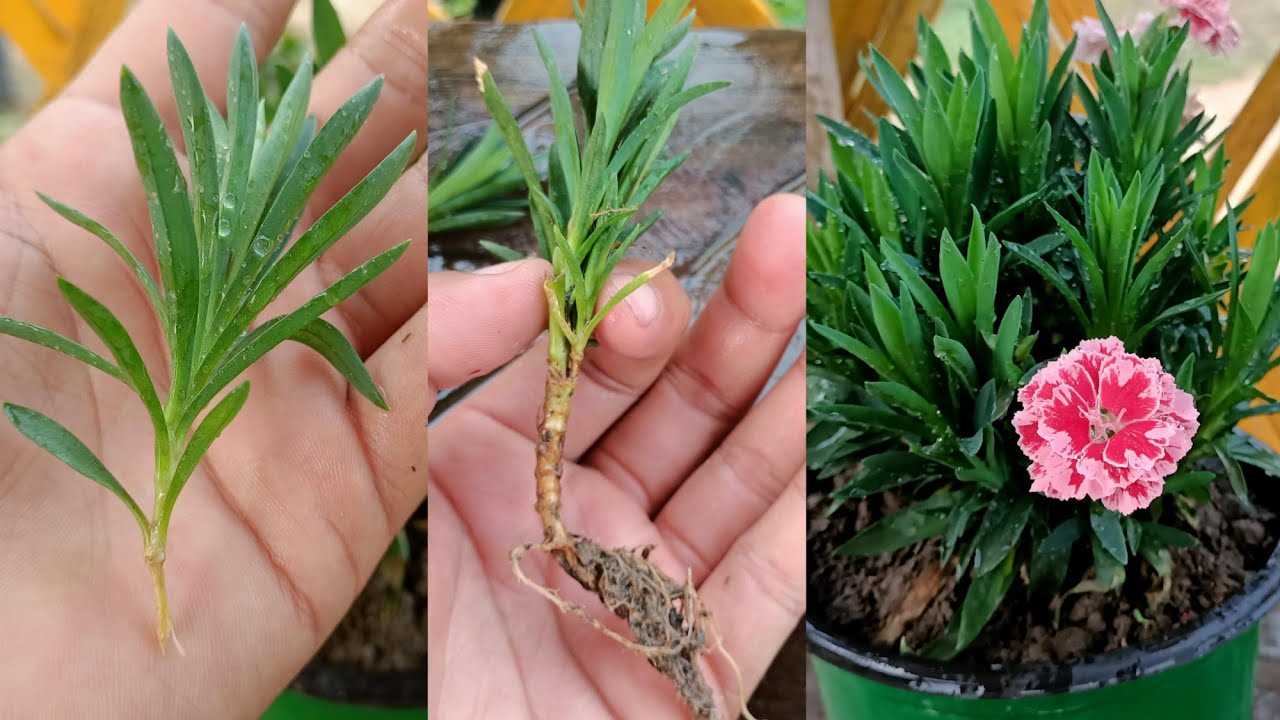

- Carnation seeds
- Seed starting mix or compost
- Seed tray or containers
- Clear plastic dome or plastic wrap
- Water spray bottle
Steps for Sowing Carnation Seeds:
- Prepare the seed tray or containers by filling them with seed starting mix or compost. Make sure the soil is loose and well-draining.
- Sprinkle the carnation seeds evenly over the soil surface. Avoid overcrowding the seeds, as this can lead to poor germination and competition among seedlings.
- Cover the seeds with a thin layer of soil, about 1/8 to 1/4 inch deep. Gently press down the soil to ensure good seed-to-soil contact.
- Mist the soil surface with water from a spray bottle to moisten it without causing waterlogging.
- Cover the seed tray or containers with a clear plastic dome or plastic wrap to create a mini greenhouse effect. This helps to retain moisture and create a warm environment for germination.
- Place the seed tray or containers in a warm location, ideally with a temperature range of 65 to 75 degrees Fahrenheit (18 to 24 degrees Celsius).
- Check the soil moisture regularly and mist the surface if it starts to dry out. Avoid overwatering, as this can lead to fungal diseases and damping-off of the seedlings.
- Once the seeds have germinated and the seedlings have developed a few sets of true leaves, remove the plastic cover and place the tray or containers in a location with bright indirect sunlight.
- Continue to water the seedlings as needed, keeping the soil evenly moist but not waterlogged.
- After the danger of frost has passed and the seedlings have grown to a suitable size, they can be transplanted into individual pots or into the garden bed.
Following these steps will give you the best chance of successfully sowing carnation seeds and growing healthy seedlings. Enjoy your beautiful carnation flowers!
Providing the Right Conditions
Creating the ideal conditions for your carnation seedlings is crucial for their healthy growth. Here are some key factors to consider:
1. Temperature
Carnations thrive in cool temperatures, so maintain a temperature range of 60-65°F (15-18°C) during the daytime and around 50°F (10°C) at night. Avoid exposing the seedlings to extreme temperature fluctuations.
2. Light
Place your seedlings in a location that receives bright, indirect sunlight for at least 6-8 hours a day. Supplemental fluorescent lights can be used if natural lighting is insufficient.
3. Humidity
Carnations require moderate humidity levels to germinate and grow properly. Aim for a humidity level of around 50-60%, which can be achieved by placing a tray filled with water near the seedlings or by using a humidifier.
4. Air Circulation
Adequate air circulation is important to prevent the growth of fungal diseases. Use a small fan to ensure air movement, but avoid placing it directly on the seedlings as it may cause damage.
5. Watering
Keep the soil moist, but not soggy, by watering your seedlings regularly. It’s best to water from the bottom by placing the pots in a tray of water for a few minutes, allowing the soil to soak up the moisture.
6. Fertilizer
Once the seedlings have developed their second set of true leaves, you can begin fertilizing them with a balanced liquid fertilizer diluted to half strength. Apply the fertilizer every two weeks to promote healthy growth.
7. Transplanting
When the seedlings have grown strong enough and have at least four sets of leaves, they can be transplanted into individual pots or containers. Use well-draining soil and gently separate the seedlings, being careful not to damage the roots.
By providing the right conditions, you can ensure that your carnation seedlings have a strong start and thrive as they continue to grow.
Watering and Feeding
Proper watering and feeding are essential for the healthy growth of carnation seedlings. Here are some important tips to follow:
Watering
- Water the seedlings regularly to keep the soil evenly moist. Carnations prefer moist but not soggy soil.
- Avoid overwatering as it can lead to root rot and other diseases. Check the moisture level of the soil before watering.
- Water the seedlings at the base to prevent wetting the leaves, as this can promote fungal diseases.
- Use a watering can or a gentle spray attachment to water the seedlings.
- Adjust the watering frequency based on the weather conditions. During hot and dry periods, the seedlings may require more frequent watering.
Feeding
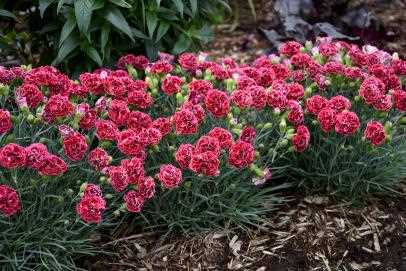

- Start feeding the seedlings with a balanced liquid fertilizer once they have developed their first true leaves. Follow the instructions on the fertilizer package for the correct dosage.
- Feed the seedlings every two weeks during the growing season.
- Ensure that the fertilizer is evenly distributed to prevent burning the roots. Water the seedlings after fertilizing to help the nutrients reach the roots.
- Consider using a slow-release fertilizer for a continuous and controlled nutrient supply.
By following these watering and feeding practices, you can ensure that your carnation seedlings receive the necessary nutrients and moisture for healthy growth. Remember to monitor the soil moisture and adjust the watering frequency as needed.
Transplanting Seedlings
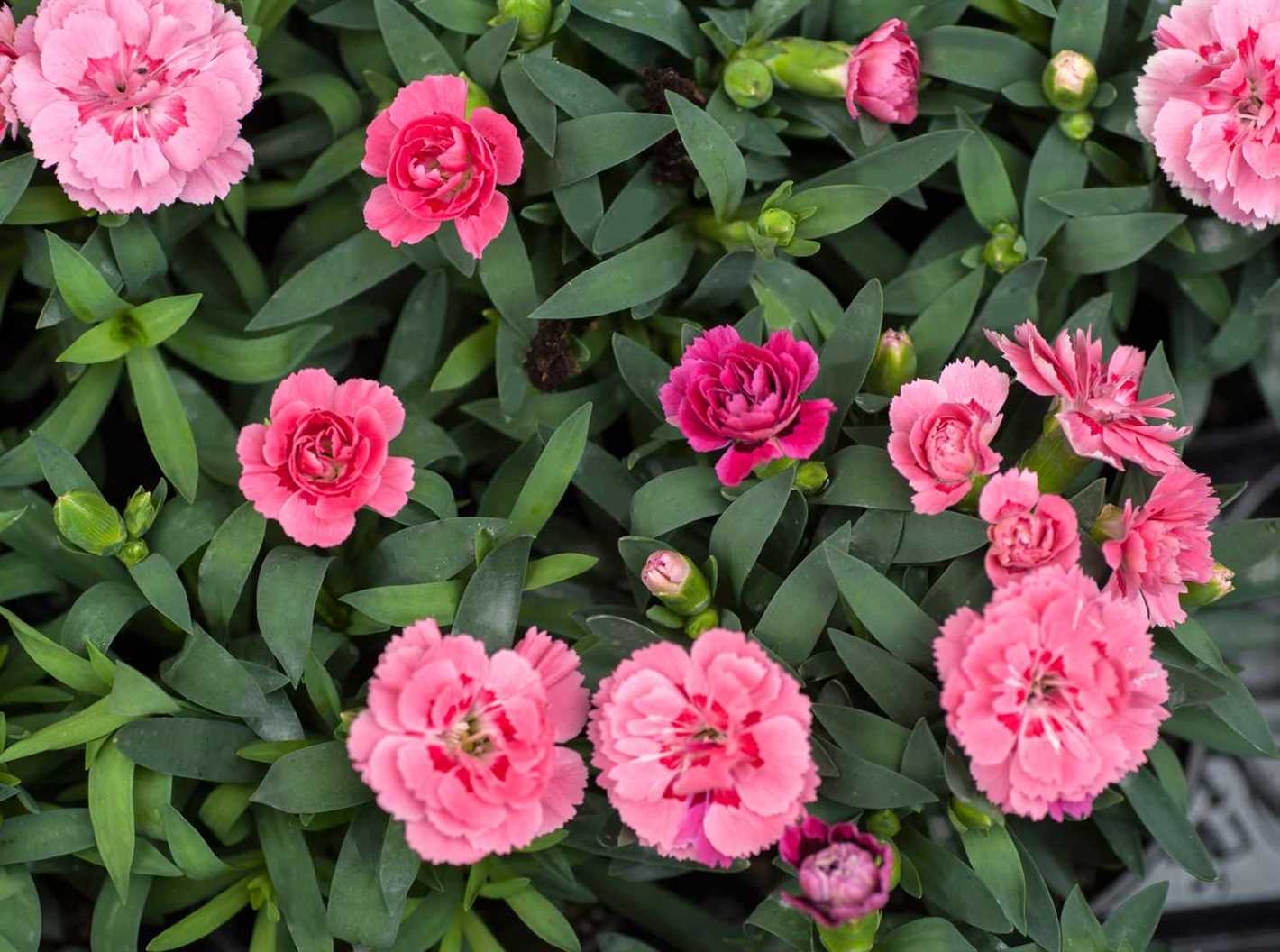

Transplanting carnation seedlings is an important step in their growth process. When the seedlings have reached a height of about four inches, it is time to transplant them into individual containers or into your garden. Follow these steps to ensure successful transplantation:
- Choose appropriate containers: Use small pots or cell packs that are at least 3 inches deep. Make sure the containers have drainage holes to prevent waterlogging.
- Prepare the soil: Use a well-draining soil mix or a combination of peat moss, vermiculite, and perlite. This will provide a favorable environment for root development.
- Water the seedlings: Before transplanting, water the seedlings thoroughly to make it easier to remove them from their current tray or container.
- Remove the seedlings: Carefully lift each seedling from its current container, holding it by its leaves or gently prying it out with a small tool.
- Plant the seedlings: Make a hole in the new container and gently place the seedling inside. Backfill the hole with soil mix and press it lightly to secure the seedling.
- Water the transplanted seedlings: After transplanting, water the seedlings again to help settle the soil and provide moisture for the roots.
- Provide favorable growing conditions: Place the newly transplanted seedlings in a location with bright, indirect light. Maintain a temperature between 60-70°F (15-21°C) and keep the soil evenly moist.
- Harden off the seedlings: Before planting them in the garden, gradually expose the seedlings to outdoor conditions, starting with a few hours of sunlight and gradually increasing the duration over a period of one to two weeks.
- Plant in the garden: Once the seedlings have been hardened off, transplant them into the garden. Dig holes that are slightly larger than the root ball and space the plants according to the recommended distance for the specific carnation variety.
- Maintain care: Provide regular watering, fertilize as needed, and monitor for any pests or diseases that may affect the seedlings. Remove any weeds that may compete for nutrients.
Following these transplanting steps will help ensure the healthy growth and development of your carnation seedlings, allowing them to thrive and produce beautiful flowers.
Troubleshooting Common Issues
1. Seeds not germinating
If your carnation seeds fail to germinate, there could be several reasons for this issue:
- Temperature: Carnation seeds require an average temperature of 70-75°F (21-24°C) to germinate. Ensure that the seeds are kept in a warm location.
- Moisture: The soil should be evenly moist but not overly wet. Maintain the proper moisture level by misting the soil with water as needed.
- Seed quality: Poor-quality or old seeds may have low germination rates. It is recommended to purchase fresh seeds from a reliable source.
2. Seedlings are leggy and weak
If your carnation seedlings are growing tall and weak, this is a sign of legginess. The following factors can contribute to this problem:
- Insufficient light: Carnations require at least 12-16 hours of direct sunlight or artificial light. If they are not receiving enough light, they will grow tall and leggy. Consider providing supplemental light or moving the seedlings to a brighter location.
- Overcrowding: If the seedlings are planted too closely together, they will compete for light and become leggy. Thin out the seedlings by transplanting them into separate containers.
3. Disease or pest issues
Carnations can be susceptible to various diseases and pests, including damping-off, powdery mildew, aphids, and thrips. If you notice any of the following symptoms, take appropriate action:
- Damping-off: This is a fungal disease that causes seedlings to wilt and rot at the base. Use sterile soil and ensure proper drainage to prevent this disease.
- Powdery mildew: Powdery white or gray spots on the leaves indicate a fungal infection. Treat with a fungicide recommended for controlling powdery mildew.
- Aphids: These small insects can infest carnation plants and suck the sap from the leaves. Remove them manually or use an insecticidal soap to control their population.
- Thrips: Thrips cause silvery streaks on leaves and flowers. Use sticky traps or insecticidal soap to control thrips.
4. Poor growth or yellowing leaves
If your carnation seedlings show poor growth or have yellowing leaves, the following factors may be responsible:
- Nutrient deficiency: Carnations require a balanced fertilizer to thrive. Apply a slow-release fertilizer or a liquid fertilizer as recommended on the packaging.
- Overwatering: Excessive watering can lead to root rot and poor growth. Ensure proper drainage and allow the soil to dry slightly between waterings.
5. Lack of blooms
If your carnation plants fail to produce blooms, the following factors may be contributing to the problem:
- Insufficient light: Carnations require full sun to bloom profusely. Ensure that the plants receive at least 6-8 hours of direct sunlight each day.
- Improper pruning: Regular pruning is essential for carnations to encourage the growth of new buds. Prune the plants lightly after each bloom cycle to promote continuous flowering.
- Incorrect temperature: Carnations thrive in cool temperatures of around 60-65°F (15-18°C) during the day and 45-50°F (7-10°C) at night. High temperatures can inhibit blooming.
| Issue | Cause | Solution |
|---|---|---|
| Seeds not germinating | Incorrect temperature, inadequate moisture, poor seed quality | Maintain proper temperature, ensure adequate moisture, use fresh seeds |
| Leggy and weak seedlings | Insufficient light, overcrowding | Provide adequate light, thin out seedlings |
| Disease or pest issues | Damping-off, powdery mildew, aphids, thrips | Prevent disease with proper soil and drainage, treat with appropriate fungicides or insecticides |
| Poor growth or yellowing leaves | Nutrient deficiency, overwatering, poor soil quality | Apply fertilizer, adjust watering, amend soil |
| Lack of blooms | Insufficient light, improper pruning, incorrect temperature | Ensure adequate light, prune properly, maintain proper temperature |
Questions and Answers:
When is the best time to start growing carnation seedlings?
The best time to start growing carnation seedlings is in early spring, around 8-10 weeks before the last frost date in your area.
What type of soil is best for growing carnation seedlings?
Carnation seedlings require well-draining soil that is rich in organic matter. A mixture of compost, perlite, and peat moss is ideal for growing healthy seedlings.
How deep should I plant the carnation seeds?
Carnation seeds should be planted at a depth of about 1/4 inch (6mm). It’s important not to bury the seeds too deep, as they need light to germinate.
Do carnation seedlings need direct sunlight?
Carnation seedlings need bright indirect light to grow properly. They should be placed in a location where they can receive at least 6-8 hours of light each day. Avoid placing them in direct sunlight, as it can cause the seedlings to become stressed and wilt.
How often should I water my carnation seedlings?
Carnation seedlings should be watered regularly to keep the soil evenly moist, but not waterlogged. Watering once or twice a week should be sufficient, but you should adjust the frequency depending on the moisture levels in your specific environment.







